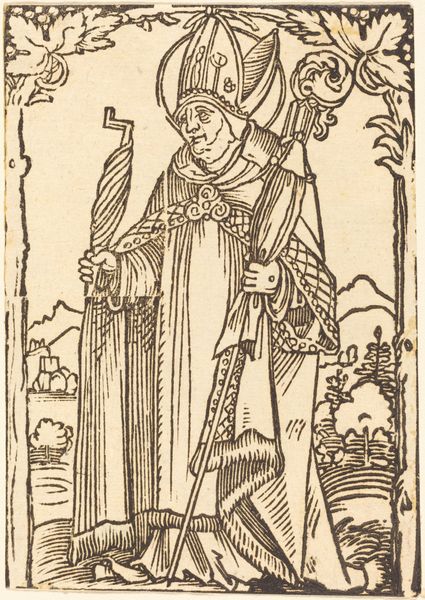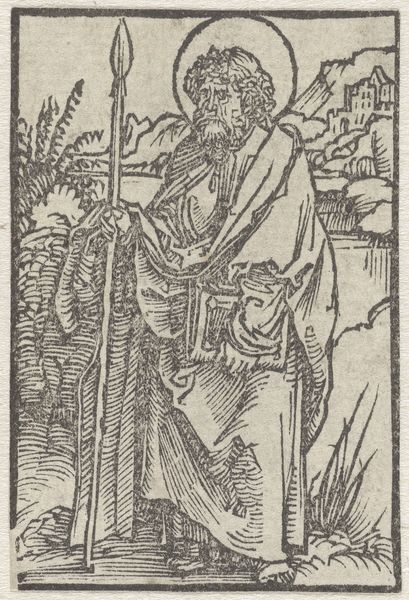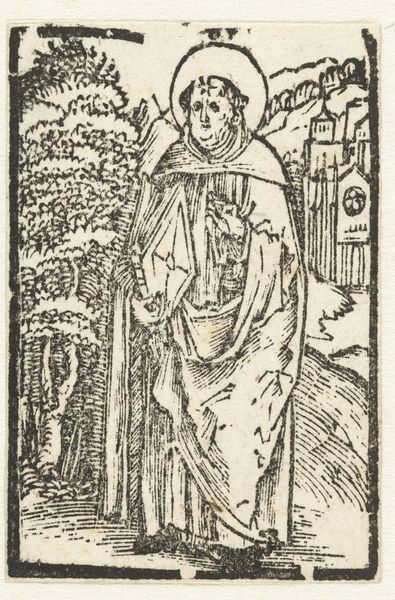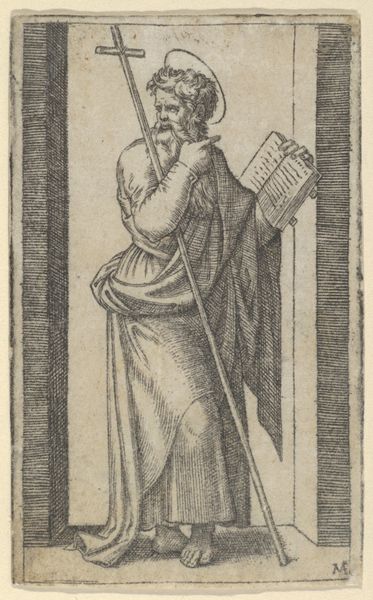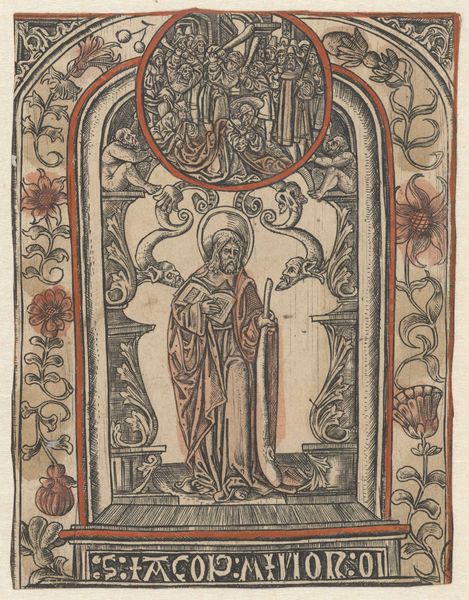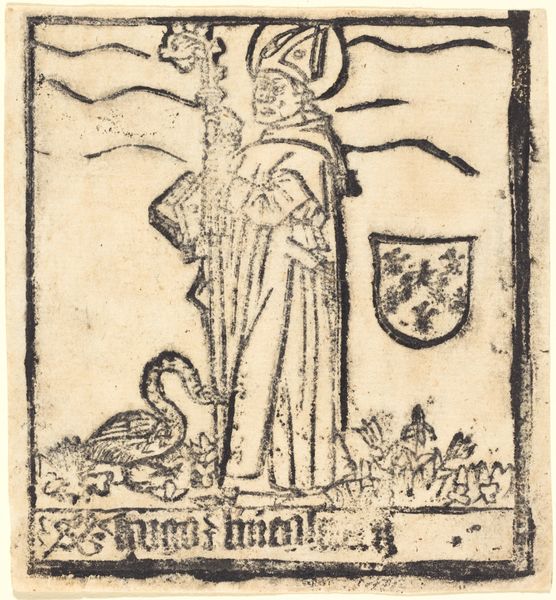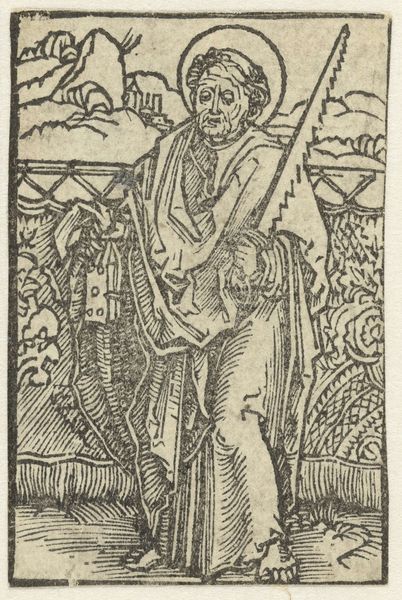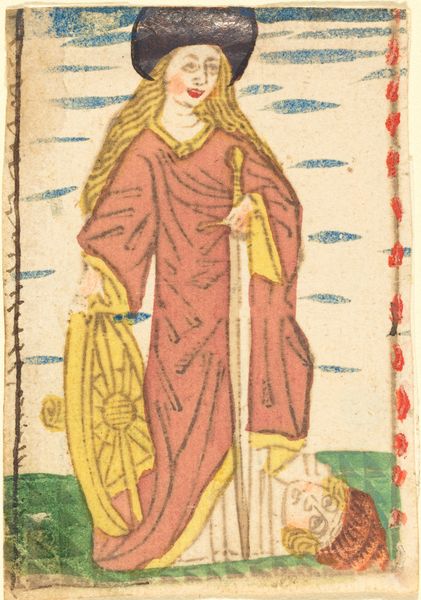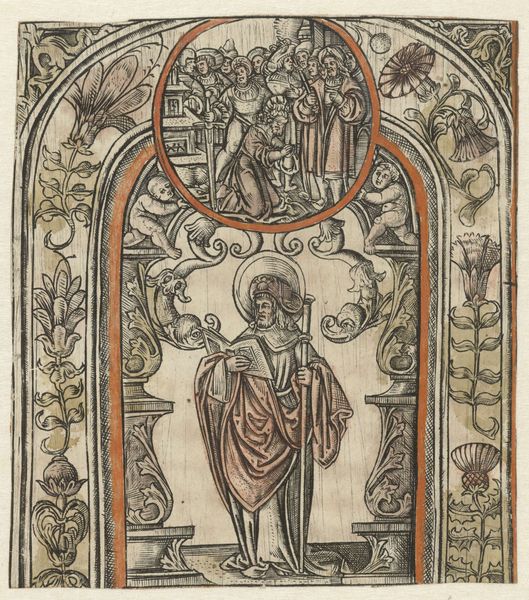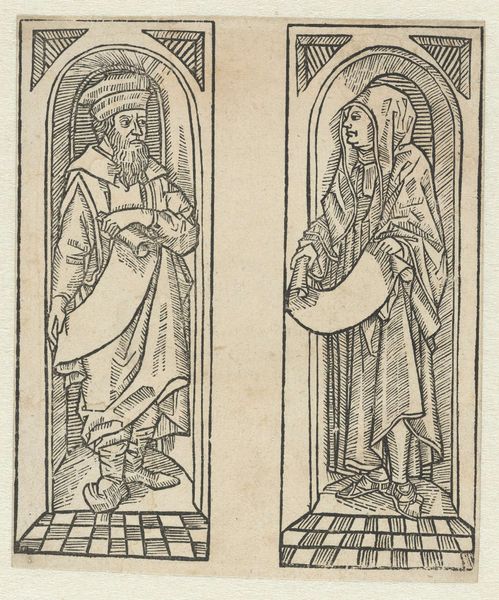![Saint Agnes [verso] by Anonymous](/_next/image?url=https%3A%2F%2Fd2w8kbdekdi1gv.cloudfront.net%2FeyJidWNrZXQiOiAiYXJ0ZXJhLWltYWdlcy1idWNrZXQiLCAia2V5IjogImFydHdvcmtzLzc3NzA1YWE0LTE1OWQtNGZhZS05MjY3LTdlZDczMjcyMjc0OS83NzcwNWFhNC0xNTlkLTRmYWUtOTI2Ny03ZWQ3MzI3MjI3NDlfZnVsbC5qcGciLCAiZWRpdHMiOiB7InJlc2l6ZSI6IHsid2lkdGgiOiAxOTIwLCAiaGVpZ2h0IjogMTkyMCwgImZpdCI6ICJpbnNpZGUifX19&w=3840&q=75)
drawing, print, ink, pen
#
drawing
#
ink drawing
#
medieval
#
narrative-art
#
pen drawing
# print
#
figuration
#
ink
#
line
#
pen
Copyright: National Gallery of Art: CC0 1.0
Editor: Here we have an ink and pen drawing, *Saint Agnes*, made around 1460 to 1480 by an anonymous artist. I'm immediately drawn to the figure's stillness amidst the landscape, almost like she's floating. What symbolic readings come to mind for you? Curator: Well, the lamb is a central symbol, isn’t it? Think about the Agnus Dei, the Lamb of God – representing Christ's innocence and sacrifice. The saint holds it protectively, suggesting a safeguarding of purity, not just hers, but perhaps a more universal concept. What do you make of the palm frond she’s holding? Editor: I assumed it signified martyrdom, like she gave her life for her faith? Curator: Precisely. The palm is victory over death, triumph of the spirit. In early Christian iconography, such symbols were how the faithful "read" the image; literacy was not widespread. Does the crown made of flowers atop Saint Agnes’ head seem contradictory alongside the imagery of martyrdom to you? Editor: A little… I suppose it could also represent innocence or virginity? Curator: Indeed. It highlights Saint Agnes’s purity. Medieval audiences were keenly aware of visual language; these images were not merely decorative but acted as spiritual touchstones, reinforcing doctrines and inspiring devotion. Consider the pen strokes, seemingly simple yet laden with meaning. What does the repetition of line suggest to you? Editor: Now I'm realizing that they all work together to express aspects of both suffering and triumph through shared symbols that communicate across time. It makes it easier to connect to on a personal level! Curator: Absolutely. And, seeing it with new eyes ourselves reminds us that cultural memory persists in these images; we decipher the symbols and, in doing so, keep the stories alive.
Comments
No comments
Be the first to comment and join the conversation on the ultimate creative platform.

